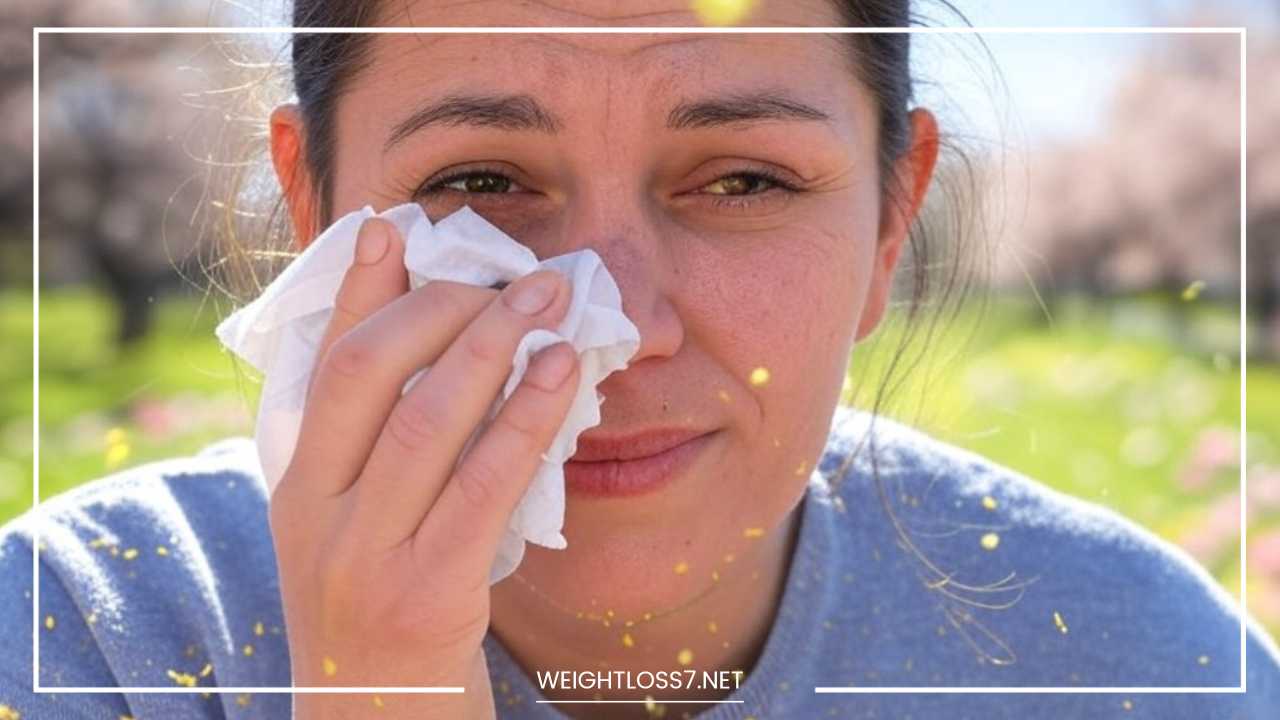What is Hay Fever

Hay Fever
What is Hay Fever?
Hay fever, medically known as allergic rhinitis, is a prevalent allergic condition affecting millions of individuals across the globe.
The term “hay fever” is often misleading, as it does not actually involve hay, but rather a heightened immune response to airborne allergens such as pollen.
This condition occurs when the immune system erroneously identifies certain substances, typically harmless, as dangerous.
In response, the body releases chemicals like histamine, which leads to inflammation and a variety of symptoms affecting the nose, eyes, and throat.
Although the name suggests an allergy to hay, in reality, the primary culprits are often plant pollens, including those from trees, grasses, and weeds.
Despite this, the term “hay fever” has been around for centuries and is still widely used today, even though medical understanding has advanced.
Hay fever can range from mild to severe, and its symptoms often mimic those of a common cold or viral infection. However, unlike colds, hay fever is a result of an allergic reaction, not an infection.
Why is it Called Hay Fever?
The term “hay fever” dates back to the 19th century when people initially thought that hay or freshly cut grass were the causes of the symptoms.
During that time, it was believed that hay could irritate the respiratory system and lead to the sneezing, runny nose, and itchy eyes that are characteristic of allergic rhinitis.
This theory was supported by the fact that hay fever symptoms would often appear during the hay-cutting season, in late spring or early summer.
However, as medical knowledge advanced, it became clear that pollen, not hay itself, was responsible for the symptoms.
Pollen from trees, grasses, and weeds triggers an allergic reaction in many individuals, leading to inflammation of the nasal passages, sinuses, and sometimes the eyes.
Despite this revelation, the name “hay fever” remained in use due to its historical roots, and it continues to be a common term to describe seasonal allergies related to pollen exposure.
What Causes Hay Fever?
Hay fever is triggered by allergens—substances that the immune system mistakenly identifies as harmful invaders.
These allergens are usually harmless, but in individuals with hay fever, the immune system reacts aggressively, releasing chemicals like histamine.
This results in inflammation and irritation in areas such as the nose, sinuses, and eyes.
The most common allergens responsible for hay fever include:
- Pollen: Pollen is the leading trigger for hay fever. There are three main types of pollen: tree pollen, grass pollen, and weed pollen. The pollen from different plants tends to be airborne during specific seasons, making it easier for individuals to experience seasonal allergies.
- Tree pollen: This is the most common cause of hay fever in early spring. Trees such as birch, cedar, oak, and maple release their pollen at this time. Pollen counts are usually highest in March, April, and May.
- Grass pollen: Grasses such as ryegrass, Bermuda, and timothy release pollen in late spring to summer (typically May to July). Grass pollen allergies are common during these months, especially in rural areas where grass and fields are prevalent.
- Weed pollen: Weeds such as ragweed, pigweed, and sagebrush release their pollen in late summer and fall, typically from August to October. Ragweed, in particular, is notorious for causing severe hay fever in many individuals.
- Dust Mites: Dust mites are tiny organisms that live in household dust. These microscopic creatures thrive in warm, humid environments, such as bedding, upholstered furniture, and carpets. Dust mites are responsible for perennial allergies, meaning they can trigger symptoms year-round. People with hay fever may experience symptoms even when pollen levels are low if they are exposed to dust mites.
- Pet Dander: Pet dander refers to the tiny flakes of skin shed by furry animals such as cats, dogs, and even rodents. These flakes can become airborne and cause allergic reactions when inhaled. Pet dander is another year-round allergen and may be particularly problematic for those who have pets in the home.
- Mold Spores: Mold is a type of fungus that releases spores into the air, especially in damp environments. These spores can be inhaled and trigger allergic reactions, leading to hay fever symptoms. Mold tends to thrive in areas with high humidity, such as bathrooms, basements, and kitchens. Outdoor mold, often found in leaves and soil, can also contribute to seasonal hay fever.
What are the Symptoms of Hay Fever?
Hay fever symptoms can vary from person to person and may range from mild irritation to severe discomfort. The most common symptoms of hay fever are related to the nose, eyes, and throat, as well as the overall immune response. Symptoms are generally more noticeable during the pollen seasons, but can also occur year-round for those with perennial allergens like dust mites and pet dander.
Some of the most common symptoms include:
- Sneezing: Frequent and uncontrollable sneezing is one of the hallmark signs of hay fever. It often occurs in rapid succession and can be accompanied by a runny or stuffy nose.
- Runny Nose: A clear, watery nasal discharge is another common symptom. This discharge is produced as the body attempts to flush out the allergen.
- Congestion: Nasal congestion, or a stuffy nose, is a result of inflammation in the nasal passages. It can lead to difficulty breathing through the nose and may worsen at night, making it difficult to sleep.
- Itchy Eyes: Red, itchy, and watery eyes are a frequent complaint for those with hay fever. This symptom can be particularly bothersome and may cause people to rub their eyes, which can worsen irritation.
- Cough: A persistent dry cough may develop due to postnasal drip, where mucus from the sinuses drains into the back of the throat. This can irritate the throat and trigger coughing.
- Sore Throat: Irritation and inflammation of the throat can result in a sore throat, often caused by the constant drainage of mucus from the nose.
- Headache: Headaches, particularly sinus headaches, are common due to congestion and inflammation of the sinuses. These headaches can be throbbing or pressure-like in nature.
- Fatigue: The persistent discomfort of hay fever, combined with poor sleep due to nasal congestion, can lead to feelings of tiredness and fatigue. This can impact work, school, and daily activities.
When is Hay Fever Season?
Hay fever season depends largely on the type of allergen involved, as different allergens peak at different times of the year.
The seasonality of hay fever is largely dictated by pollen release, with trees, grasses, and weeds all having specific times during which they release pollen into the air.
- Spring: This is the most common time for tree pollen allergies. Trees such as birch, oak, and cedar release large amounts of pollen in the early spring (from March to May). During this time, individuals who are sensitive to tree pollen may experience intense symptoms.
- Summer: Grass pollen becomes more prominent in late spring and summer, typically between May and July. Individuals allergic to grass pollen often experience symptoms during this time, particularly when they are outdoors in fields or areas with tall grasses.
- Fall: Fall is the time for weed pollen allergies, with ragweed being one of the most significant offenders. Ragweed pollen peaks in late summer and continues into the fall, from August to October. This time of year can be particularly difficult for those allergic to ragweed and other weeds.
Is Hay Fever Contagious?
No, hay fever is not contagious. It is an allergic condition, meaning it occurs when the immune system overreacts to certain harmless substances (allergens).
Since it is not caused by a virus or bacteria, it cannot be passed from one person to another. Individuals with hay fever may have inherited a genetic predisposition to develop allergies, or they may have developed sensitivities to allergens over time.
How Long Does Hay Fever Last?
The duration of hay fever symptoms depends on the individual, the specific allergen, and whether the person has seasonal or perennial allergies.
Seasonal hay fever is typically triggered by pollen and lasts for a specific period, usually coinciding with the pollen season.
- Seasonal hay fever: Symptoms can last for weeks or months, depending on the timing and intensity of pollen exposure. Tree pollen allergies tend to last from late March to early May, grass pollen allergies peak in late spring and summer, and weed pollen allergies occur in late summer and fall.
- Perennial hay fever: For individuals allergic to year-round allergens such as dust mites, pet dander, and mold, symptoms can persist throughout the year. These individuals may experience symptoms every day or with frequent flare-ups, especially when exposed to high levels of allergens.
Is Hay Fever an Allergy?
Yes, hay fever is a type of allergy, specifically allergic rhinitis. It occurs when the immune system overreacts to harmless substances in the environment, such as pollen, dust mites, pet dander, or mold spores.
This overreaction triggers an inflammatory response in the nose, eyes, and sinuses, leading to the symptoms associated with hay fever.
Allergic rhinitis is a widespread condition, and hay fever is one of the most common forms of allergic rhinitis.
It is often triggered by seasonal allergens (like pollen), but can also be caused by perennial allergens that are present year-round.
How to Stop Hay Fever Immediately?
While there is no instant cure for hay fever, there are several methods to alleviate symptoms quickly and provide relief:
- Avoid allergens: The best way to reduce hay fever symptoms is to limit exposure to allergens. Stay indoors during peak pollen times (early morning and late afternoon), keep windows closed, and use air conditioning with a clean filter. If you are allergic to pet dander or dust mites, consider using allergen-proof bedding and cleaning your home frequently.
- Nasal irrigation: Rinsing the nasal passages with a saline solution can help remove pollen, dust, and other irritants from the nasal cavity. This can relieve congestion and reduce sneezing.
- Over-the-counter medications: Antihistamines, decongestants, and nasal sprays are commonly used to manage hay fever symptoms. Antihistamines help block the release of histamine, which is responsible for many allergic reactions. Decongestants can help relieve nasal congestion, and nasal corticosteroids can reduce inflammation in the nasal passages.
- Eye drops: For itchy, watery eyes, over-the-counter antihistamine eye drops or lubricating eye drops can help soothe irritation and reduce redness.
How to Cure Hay Fever Permanently?
Unfortunately, there is no permanent cure for hay fever. However, several treatment options can help manage symptoms and improve quality of life:
- Allergen immunotherapy: This treatment involves gradually exposing the individual to small amounts of the allergen over time to desensitize the immune system. This can be done through allergy shots (injections) or sublingual tablets that dissolve under the tongue. Over time, immunotherapy can help reduce sensitivity to allergens and lessen the severity of hay fever symptoms.
- Medications: Prescription medications such as antihistamines, nasal corticosteroids, and leukotriene modifiers can help control symptoms. These medications work to reduce inflammation, prevent histamine release, and block other allergic responses. They are often used in combination for more effective symptom control.
- Lifestyle changes: Making certain lifestyle adjustments can help minimize allergen exposure. This includes using air purifiers, keeping windows closed during high pollen seasons, and regularly cleaning your home to reduce dust, pet dander, and mold. If you are allergic to pets, consider keeping them out of bedrooms and other allergy-sensitive areas of the house.
Living with Hay Fever
Although hay fever can be bothersome, there are many strategies for managing symptoms and improving your quality of life. Here are some tips to help you cope with hay fever:
- Monitor pollen counts: Stay informed about local pollen levels by checking online resources or weather apps that provide pollen forecasts. Planning outdoor activities around lower pollen counts can help reduce exposure.
- Create an allergen-free home: Use allergen-proof covers on pillows and mattresses, vacuum regularly, and invest in a high-quality air purifier. Consider replacing carpeting with hardwood or tile flooring, as carpets can trap dust, pet dander, and pollen.
- Maintain good hygiene: After spending time outdoors, shower to remove pollen from your skin and hair, and change into fresh clothing to prevent pollen from spreading inside your home.
- Manage stress: Stress can worsen hay fever symptoms, so incorporating relaxation techniques into your daily routine is important. Consider practices like yoga, meditation, deep breathing, or taking regular walks to reduce stress and promote overall well-being.
- Consult an allergist: If your symptoms are severe or persistent, consulting an allergist can help you get a proper diagnosis and treatment plan tailored to your specific allergens and needs.
Final Thoughts
Hay fever is a common allergic condition that can cause significant discomfort, especially during peak pollen seasons.
While there is no permanent cure, various treatment options, including allergen avoidance, medications, and immunotherapy, can help manage symptoms effectively.
By understanding the causes of hay fever and using proactive strategies, individuals can minimize its impact and lead a healthier, more comfortable life.

















